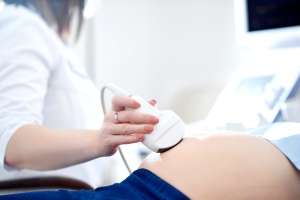
New risk for new moms and moms to be
In developed nations like Canada, it’s highly unusual for women to die during pregnancy and in the first year following the birth of a child. A study published earlier today in the Canadian Medical Association Journal points to a worrisome cause.
Doctors looked at coroner records of deaths by suicide in Ontario between 1994 and 2008. A total of 1648 such deaths took place during that period. Of these, 51 of them occurred either during pregnancy or during the first year following the birth of the child. The number doesn’t seem like a lot, but the 51 deaths accounted for 1 in every 19 maternal deaths.
That makes suicide the fourth leading cause of death during the perinatal period. At 2.58 per 100,000 live births, the rate of suicide among pregnant women in Ontario is between the rates reported in the U.S. and the U.K.
As is often the case with such deaths, the reasons aren’t entirely clear. Still, the study uncovered some subtle and disturbing clues. The first is the method. Women who aren’t pregnant when they commit suicide tend to die by overdose. Women who complete their suicide during the perinatal period tend to die by hanging or by jumping or falling. That suggests that these women are more intent to end their lives than those who aren’t pregnant at the time.
The women included in this study tended to have a psychiatric history. Another potential risk factor uncovered by the researchers was a trend towards women who live in the northwest part of Ontario, which is sparsely populated, and where people live in greater isolation in comparison to women who live in major cities.
You may be wondering what is any role did postpartum depression play in the deaths. The Canadian Mental Health Association says postpartum depression is “depression that may start during pregnancy or at any time up to a year after the birth of a child.” The connection between postpartum depression and the suicides documented in this study is a bit confusing. The latest definition of postpartum depression in the Diagnostic and Statistical Manual or DSM 5 specifies that the episode of depression has to begin during pregnancy or during the first four weeks following birth. Critics believe that restricting the diagnosis to the first four weeks of the baby’s life would mean that many women would not be diagnosed.
In the study in CMAJ, the women who took their own lives after the birth tended to do so when the baby was between seven and eight months of age – far beyond the first four weeks of the baby’s life.
As well, in the study in CMAJ, most of the women who ended their lives had a mood or anxiety disorder – not a psychotic disorder. Psychosis is a feature sometimes seen in women diagnosed with *postpartum psychosis – a much rarer condition than postpartum depression that can cause both depression and symptoms of psychosis (paranoid thoughts as well as hearing voices). That suggests that the women who commit suicide during pregnancy and following the birth likely do not have postpartum psychosis.
The seriousness of the problem makes one wonder how well the health care system did in meeting the emotional needs of the women in the the CMAJ study. Thirty-six of 51 women had contact with someone regarding mental health in the year before the death. Twenty of the women talked to someone about their mental health in the 30 days before they ended their lives.
Those figures are similar to the amount of services provided to women who aren’t pregnant at the time of self-harm. But there is a difference regarding the type of mental health services they receive. Women who are pregnant are less likely to see a psychiatrist, and more likely to go to their family doctor for mental health counseling. The women who ended their lives received similar prenatal and birth care to women who did not end their lives – so access to non-psychiatric care is not an issue.
That these women got mental health treatment in the year before the episode of self-harm suggests they can be identified by their psychiatric history. People like me need to ask about a history of mental health problems as part of routine care. That the women in this study had a history of anxiety or depression and not psychosis means we should ask about the risk of self-harm in pregnant women with less serious forms of mental health problems. That some of the women were isolated geographically is another possible red flag.
Partners and other close family members need to take thoughts of self-harm seriously, and to encourage pregnant women and new mothers who have them to seek help.
That said, identifying women at risk of suicide is pointless without prevention services. Maybe these women need priority access to a psychiatrist. Or maybe their family doctor or midwife needs support. The preferred methods of suicide selected by pregnant women are ones that are more likely to succeed.
That serves as the greatest warning of all.
* A previous version of this blog incorrectly equated postpartum depression with a much rarer condition called postpartum psychosis.
By Dr. Brian Goldman
Original article at: http://www.cbc.ca/radio/whitecoat/blog/new-risk-for-new-moms-and-moms-to-be
Photo credit: Shutterstock/Serhii Bobyk








